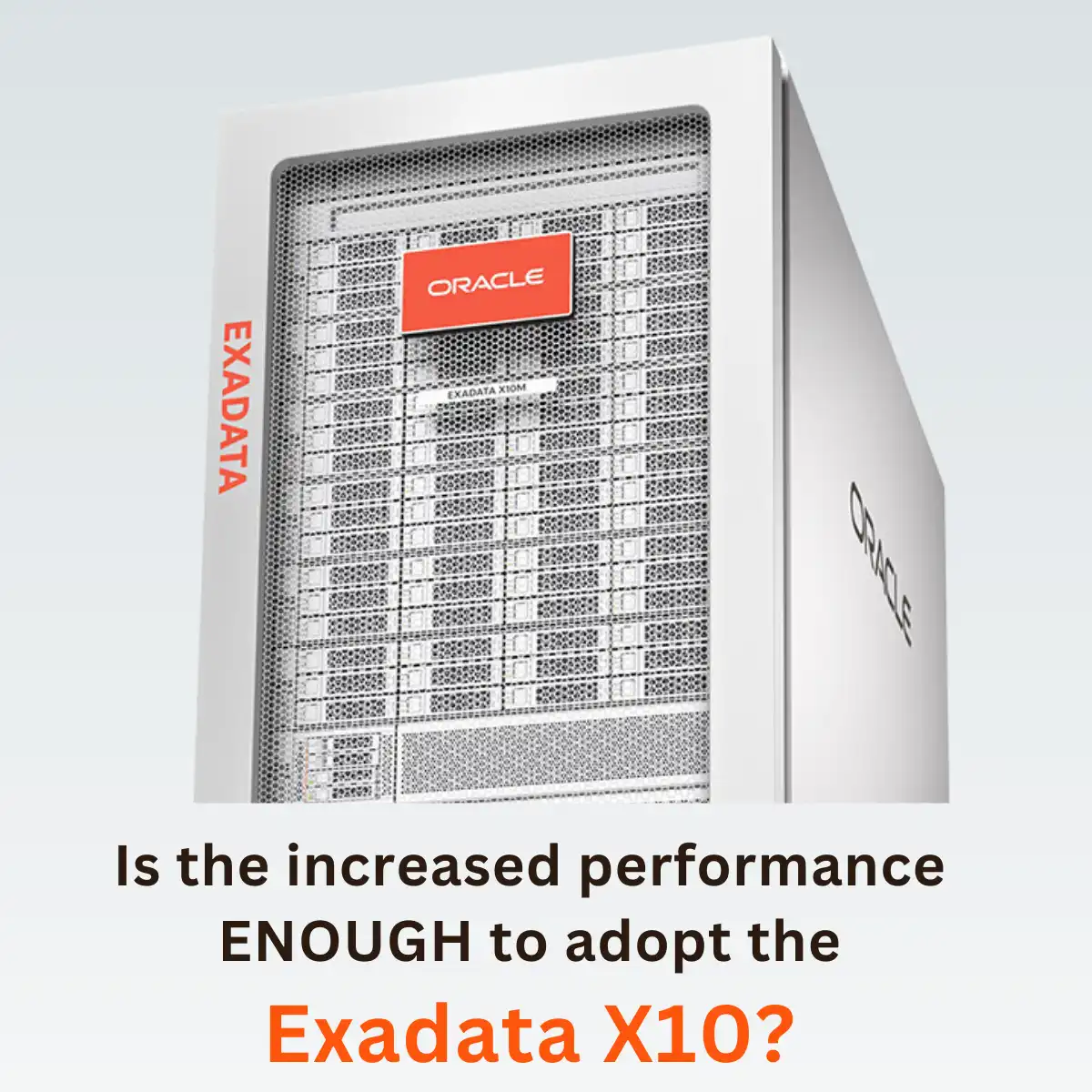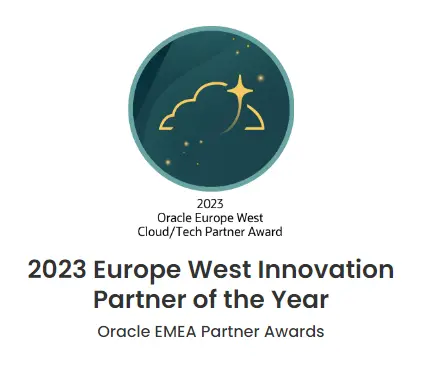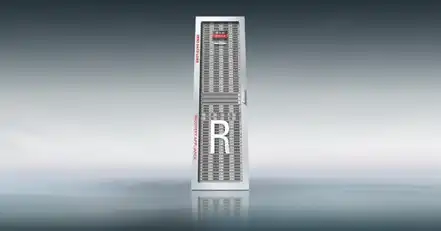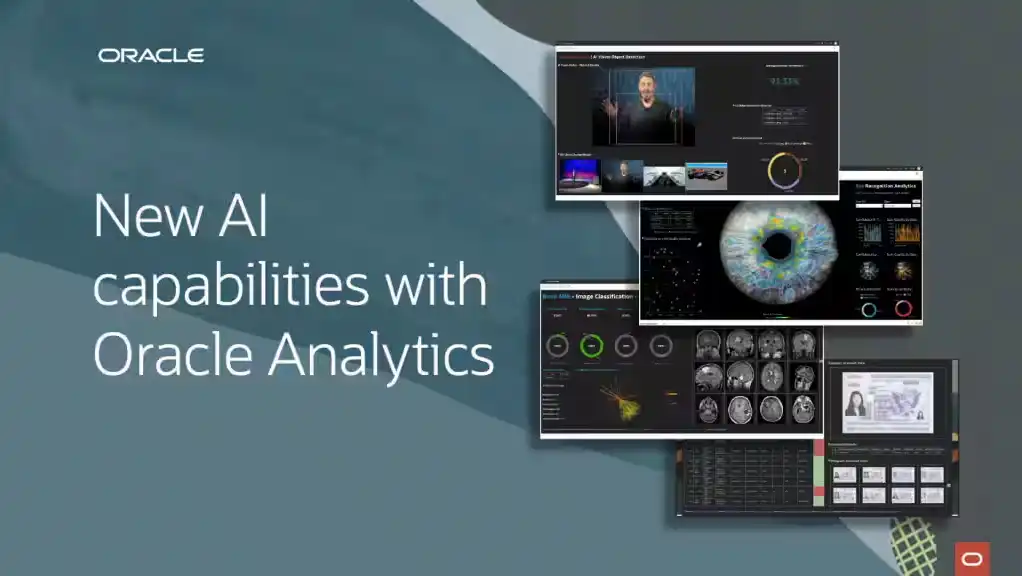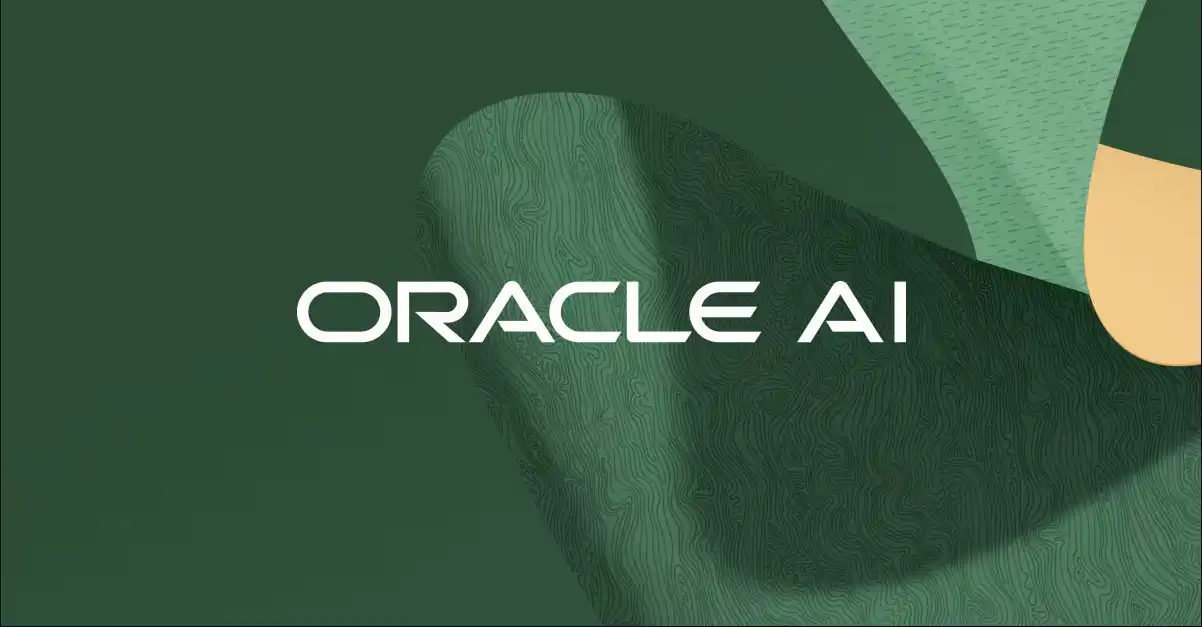Author: Cord Oestmann
It has now been a few months since Oracle announced the release of the latest (12th) version of its flagship engineered system, the Exadata Database Machine X10. Doing a brief search on the web for reviews quickly reveals that the space is dominated by the Oracle Marketing inspired analyst reviews, almost all of which emphasise the improved feeds and speeds. Don’t get me wrong, the uplift in the performance (OLTP 3x higher transaction and 3.6x higher analytics throughput) and storage (22% more hard drive capacity on the High Capacity storage servers) of the new version of Exadata is impressive when compared to the X9 model. It’s definitely not to be sniffed at, if speed of processing and storage capacity is what drove you to the Exadata platform in the first place.
However, I would argue that the appeal of especially the compute performance already exceeds what a large number of users of the Oracle database would need or be able to appreciate. I suppose what I am asking myself is, why would anyone who has not yet adopted the technology consider it for their Oracle database implementation?
Exadata: The Journey
I have now accompanied the Exadata on its journey into customer land for more than 13 years. From its beginnings, as an optimised platform to support data warehouse projects on Oracle database, it morphed pretty quickly into something that Oracle invested a lot of time and budget in to make it the very best platform for running the Oracle database; whether this was the plan from the outset or a consequence of the Sun Microsoft acquisition, which gave Oracle immediate access to hardware development, or just serendipity, I could not say.
Over the course of just a few years, Exadata established itself as the absolute go-to solution in the areas of high end data processing, analytics and transaction throughput for many enterprise customers. However, many users of the Oracle database did not follow this path for a variety of perfectly understandable reasons. Apart from the platform’s scale exceeding many customers’ stated requirements for their Oracle database environments, another frequent objection to the adoption of the Exadata platform was cited to be the perceived high price. This is a difficult subject, as cost is a relative concept that depends heavily on the associated aspect of value, or even more precisely, a customer’s perception of value.
Oracle usually approach this topic by producing Total Cost of Ownership (TCO) models that almost invariably show a financial benefit of the Exadata over, for arguments sake, a competitor’s or customer in-house developed alternative infrastructure, often reliant on a more efficient Oracle database software licence model. Part of these TCO models are putative operational benefits, which are notoriously hard to quantify in monetary terms. It is on these operational benefits that I wanted to focus on in this blog.
Exadata: Some Less Sung Benefits
What has struck me from the outset when I started to engage with the platform, was that the people I talked to about Exadata, be that Oracle database experts or customer DBAs, all pretty quickly came to mention aspects of the platform that identified areas for cost reduction: operational reliability (including security) efficiency, and reduced risk from unplanned outage.
In fairness to Oracle, they have always mentioned the operational benefits of the Exadata platform, ease of patching and database upgrades being prime examples, but I suppose the demographic to whom this appeals most often doesn’t have the budget to drive the decision making for the adoption of the system, namely the operational staff. After all, it is those people who get called out at 2am in the morning when things fall over with the business screaming and shouting to get their systems back up and running. In fact, it was from one of these that I first heard the phrase, and I have heard it repeated many times since, delivered in a completely deadpan fashion, “it just works” when talking about the Exadata system. Arguably, as endorsements go, you can’t do much better.

Exadata X10: Why should I care?
So, if we ask ourselves the question “Exadata X10 – why should I care?” and examine it from the perspective of operational efficiency, what do we find?
For starters, the improved compute and storage capacities means that customers are looking at an even greater density for database deployment, i.e. a massive opportunity for consolidation.
This may be seen as a double-edged sword – all eggs in one basket – but in my experience the platform’s Maximum Availability Architecture compliant design mitigates most of the potential issues associated with high levels of deployment concentration. On top of this, the use of KVM virtualisation provides decent levels of environment separation that should leave all but the purist requirement of actual physical hardware separation satisfied. Having spent my formative IT years on an IBM mainframe, I recognise a lot of the mainframe level operational resilience features on the Exadata platform.
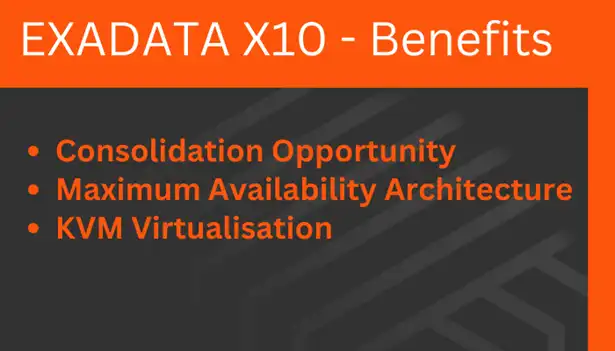
Deployment density of Oracle database instances under the auspices of database consolidation is not specific to the Exadata X10, as it has been a rationale behind some of the customer adoption of the platform for most of its existence, but the enhanced capacity of the X10 and the associated platform specific software enhancement make the proposition ever more compelling. It should be acknowledged, though, that consolidation, if done most efficiently, always comes with a slight edge, i.e. a certain level of enforced standardisation.
The latest Exadata platform software (version 23.1 at the time of writing) supports all versions of the database currently supported by Oracle (11gR2 onwards), but older versions are not covered. Customers will have to fit in with Oracle’s obsolescence schedule for the currently supported versions to continue to enjoy the system’s benefits. This may represent a significant change to a customer’s current operational practices as many try to avoid upgrading their database software due to their often torturous application testing required when moving to newer database versions. On the plus side, as Oracle have increasingly become a large consumer of its own software related processes, such as database upgrades, these have become both easier and slicker.
With the rise of Oracle’s use of its own products, not least in the Oracle Cloud Infrastructure (OCI) and its application products as Software as a Service (SaaS), operational efficiency, reliability and resilience are ever more important to Oracle; arguably they always have been important, but this is now given additional impetus. For the Exadata platform this is best illustrated using the example of the Oracle Autonomous Database. This Oracle database deployment option, and it is principally that, rather than a different product, is predicated on the use of the Exadata platform as its foundation. The reason why it is only available in the Cloud (or Exadata Cloud at Customer) is that Oracle needs to be able to control the infrastructure and software stacks underpinning that database to provide the operational guarantees that make the service autonomous. So, one can see this as the ultimate implementation of the Oracle database, the company’s best practice recommendations put into action, scalable, performant and (from the perspective of Oracle as the service provider) operated securely and efficiently.
Customers often ask vendors for references, and I cannot think of a better reference for Exadata X10 than the OCI Autonomous Database service. I would argue that even if a move to Cloud is not what customers are looking at for their Oracle database, they could do worse than study the architecture of the Autonomous Database to see what is possible for a database consolidation project using the Exadata Database Machine.
Exadata X10: Establishing Trust
This touches on a final element that I wanted to mention here: trust. When a vendor prepares marketing material or responds to a tender they will, to put it politely, put their best foot forward. Even when they prepare white papers to share best practice for the adoption and use of their products, they are limited to what they can control. Implementation, configuration and operation usually remain the ultimate responsibility of the customer.
I remember many a conversation with Oracle subject matter experts called in to investigate Oracle product related issues, and according to them the most common problems were, and probably still are, misconfiguration or misuse (here meaning pushing functionality beyond what it was designed for). This often leads to recriminations, break down in relationships and loss of trust in the product and vendor. What Oracle’s use of its own products and services in its Cloud is doing is to potentially take the edge off quite a few of such discussions.
To take the Exadata platform, there cannot be any question of whether or not it works or is cost effective as a consolidation platform as advertised because a quick look at the Autonomous Database service in OCI demonstrates this for all to see. It also gives customers the best possible prospect for the solution having longevity, something that should be a consideration if customers are taking a bet on any technology. I call it the enlightened self-interest principle: the vendor gains as much, if not a greater level of, benefit from the proposed solution than any customer. For Oracle to build its own technology future for its flagship database around the Exadata infrastructure does more to inspire trust in the product than any heart-felt protestation could.
Exadata X10: Final Thoughts
If your Oracle database estate is of a size that falls within the capacity scope of the Exadata, and definitely check if it has expanded since the last time you considered your infrastructure to bring it into this scope, you could do worse than consider the Exadata Database Machine, arguably the best enterprise platform to consolidate and run your Oracle databases.
Interested to know more?
If you would like to speak further on Exadata X10, or ANY Oracle related topic, Contact Us.
Contact us today to arrange an assessment or email:

Cord Oestmann
Principal Solution Architect at Vertice

